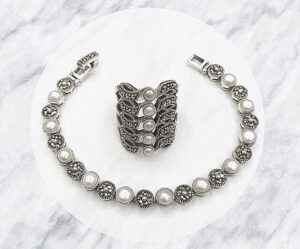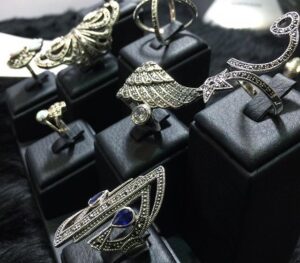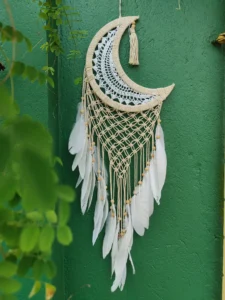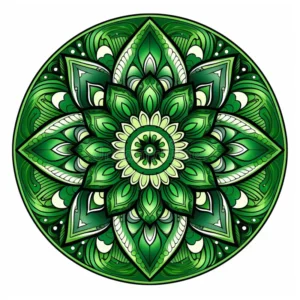In 2025, jewellery shops across Eastern Europe are experiencing a vibrant transformation. The market is witnessing a harmonious blend of classic elegance and bold, statement-making pieces. This duality reflects both the region’s deep-rooted traditions and its growing openness to global fashion influences. Retailers and designers are responding to evolving consumer tastes by offering collections that honor timeless craftsmanship while embracing daring, expressive designs. The following analysis explores the key trends shaping jewellery retail in Eastern Europe, revealing how the meeting of classic and statement styles is redefining the region’s jewellery landscape.
Jewellery Shop Trends in Eastern Europe: Classic Meets Statement

The Enduring Power of Classic Jewellery
Classic jewellery remains the bedrock of Eastern European collections. Pieces such as delicate gold chains, solitaire rings, pearl earrings, and finely crafted lockets continue to attract a wide range of customers. These designs are cherished for their simplicity, quality, and versatility, making them suitable for both everyday wear and special occasions.
Minimalist styles, characterized by clean lines and understated details, have seen a resurgence. Consumers appreciate jewellery that is lightweight, durable, and elegant without being ostentatious. Gold, rose gold, and sterling silver remain the metals of choice, often paired with ethically sourced diamonds or gemstones. This focus on minimalism and luxury aligns with a broader European trend toward sophisticated, wearable jewellery that transcends fleeting fashions.
Classic pieces also carry cultural significance. Many families pass down heirloom jewellery through generations, imbuing these items with sentimental value. The appreciation for heritage and tradition ensures that classic designs will always have a place in Eastern European jewellery shops.
The Rise of Statement Pieces
Alongside the enduring appeal of classics, there is a clear surge in demand for bold, statement jewellery. Younger generations, in particular, are drawn to chunky rings, oversized bangles, vibrant gemstone necklaces, and sculptural earrings. These pieces are designed to stand out, allowing wearers to express individuality and confidence.
The popularity of statement jewellery is amplified by social media and influencer culture. Platforms like Instagram and TikTok encourage experimentation and personal storytelling through fashion. Layering multiple rings, stacking bracelets, and mixing metals have become popular styling approaches. Retailers are expanding their inventories to include colorful, textured, and oversized pieces that cater to this growing desire for eye-catching, distinctive jewellery.
Statement pieces are not just about size or color they are about making an impression. Designers are experimenting with unconventional materials, bold shapes, and intricate craftsmanship to create jewellery that is both wearable art and a conversation starter.
Mixing Metals and Textures
A notable trend in 2025 is the breaking of traditional style rules, especially regarding the mixing of metals and textures. Consumers are moving away from perfectly matched sets in favor of layered, eclectic combinations. Mixing gold and silver, pairing brushed with polished finishes, and experimenting with organic textures are all part of this movement.
This approach adds visual interest and makes jewellery collections more versatile, allowing pieces to be worn across different outfits and occasions. Younger buyers, particularly Gen Z, champion this rule-breaking style, favoring looks that feel authentic and personal rather than overly curated.
Social media has played a significant role in popularizing mixed-metal jewellery. Online communities and influencers showcase creative combinations, inspiring others to experiment and express their individuality.
Vintage and Art Deco Influences
Eastern European jewellery shops are embracing vintage and Art Deco influences, reflecting a global revival of these styles. Art Deco pieces, characterized by geometric shapes, intricate patterns, and colorful gemstones, evoke the glamour and sophistication of the early 20th century. These designs appeal to consumers who value craftsmanship, history, and timeless elegance.
Vintage-inspired collections often feature emerald cuts, baguette diamonds, and rich hues, offering shoppers jewellery that tells a story and adds character to their style. This appreciation for heritage aligns with the region’s cultural pride and the desire for meaningful, heirloom-quality pieces.
Sustainability and Ethical Practices
Sustainability is increasingly shaping jewellery retail in Eastern Europe. Consumers are more conscious of the environmental and social impact of their purchases. There is growing demand for jewellery made from recycled metals, lab-grown diamonds, and ethically sourced gemstones.
Retailers are responding by highlighting their commitment to sustainability through transparent sourcing, eco-friendly packaging, and partnerships with responsible suppliers. This trend appeals to environmentally aware buyers and aligns with global movements toward circular fashion and ethical consumption.
Sustainable practices are not only good for the planet but also resonate with consumers who want their jewellery to reflect their values. Brands that prioritize ethics and transparency are gaining trust and loyalty in the market.
Personalized and Symbolic Jewellery
Personalization is a significant driver of jewellery sales. Buyers seek pieces that carry personal meaning, whether through engraved initials, birthstones, or symbolic motifs. Customized jewellery allows wearers to express their identity and commemorate special moments, making each piece unique.
Popular personalized items include engraved rings, charm bracelets, and pendants with meaningful symbols. This trend reflects a broader shift toward jewellery as a form of storytelling and emotional connection, rather than mere decoration.
Symbolic jewellery is also on the rise, with motifs such as hearts, infinity signs, and religious symbols finding favor among shoppers. These pieces serve as talismans, reminders of loved ones, or expressions of faith and values.
Nature-Inspired and Geometric Motifs
Nature-inspired designs featuring florals, leaves, and organic shapes are prominent in Eastern European collections. These motifs resonate with consumers’ desire to connect with the natural world and add a delicate, feminine touch to their jewellery.
At the same time, geometric and celestial motifs such as stars, moons, and abstract shapes are gaining traction. These modern designs offer a fresh contrast to traditional themes, appealing to those who favor contemporary aesthetics. Combining natural and geometric elements creates jewellery that is both grounded and imaginative.
Designers are also exploring new techniques to bring these motifs to life, using innovative materials and settings to create pieces that are visually striking and meaningful.
The Impact of Digital and Social Media Trends
Digital platforms play a crucial role in shaping jewellery trends in Eastern Europe. Brands and retailers use Instagram, TikTok, and other social media channels to showcase new collections, styling tips, and influencer collaborations. This exposure encourages consumers to experiment with both classic and statement pieces, driving demand for diverse styles.
E-commerce growth has made jewellery more accessible, especially to younger buyers who prefer online shopping. Virtual try-ons, personalized recommendations, and seamless purchasing experiences enhance customer engagement and broaden market reach.
Social media also fosters a sense of community among jewellery enthusiasts, who share their collections, styling ideas, and reviews online. This digital interaction creates buzz around new trends and helps brands connect with their audience in real time.
Economic Factors and Market Growth
Eastern Europe’s jewellery market benefits from rising disposable incomes and increasing urbanization. Consumers are willing to invest in quality pieces that combine style, meaning, and durability. The market is also influenced by global luxury trends, with local buyers seeking both international brands and homegrown designers.
The expanding middle class and growing interest in luxury goods contribute to steady market growth. Retailers who balance classic timelessness with bold innovation are best positioned to capture this diverse and evolving customer base.
Local designers are gaining recognition for their craftsmanship and creativity, further enriching the market with unique, regionally inspired collections.
Jewellery shops in Eastern Europe in 2025 are defined by a dynamic interplay between classic elegance and bold self-expression. Timeless minimalist pieces coexist with vibrant statement jewellery, while vintage and Art Deco influences add depth and nostalgia. Trends such as mixing metals and textures, sustainability, personalization, and nature-inspired motifs enrich the market, offering consumers a wide array of options to express their individuality and values.
This harmonious blend of tradition and innovation reflects the region’s cultural richness and modern aspirations, positioning Eastern Europe as a vibrant hub in the global jewellery landscape. Retailers who embrace these trends and cater to diverse tastes will thrive in this exciting and evolving market.




